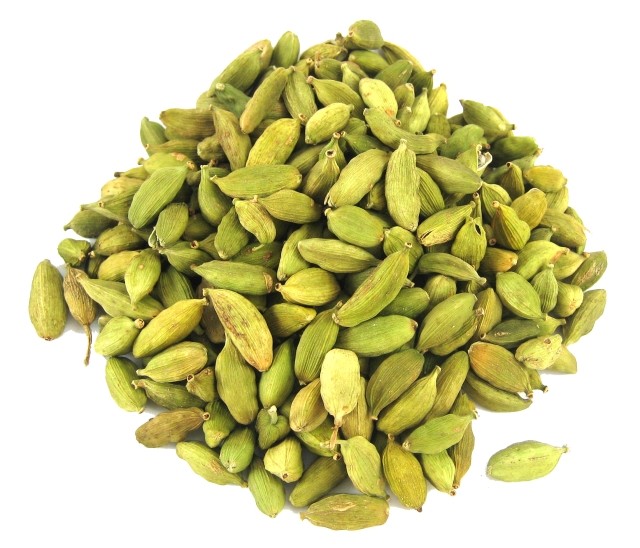Cardamom MCX Cardamom Futures Cardamom Prices
Post on: 24 Июнь, 2015 No Comment

C ardamom, the Queen of all spices, has a history as old as human race. It is the dried fruit of a herbaceous perennial plant. Warm humid climate, loamy soil rich in organic matter, distributed rainfall and special cultivation and processing methods all combine to make Indian cardamom truly unique-in aroma, flavour, size and it has parrot green colour.
Two types of cardamom are produced in India. The first type is the large one, which has not much significance as it is not traded in the Futures market. It is cultivated in North-Eastern area of the country. The second type is produced in the Southern states and these are traded in the futures market. These are mainly cultivated in Kerala, Tamil Nadu and Karnataka. As per the futures market rules, only 7 mm quality were previously traded in exchanges. But later it relaxed its norms, and now 6 mm quality is also traded in the exchanges.
The small variety, known for its exotic quality throughout the world, is now traded in Indias commodity futures exchanges. Traditional auction markets also exist for trading in small cardamom in the country.
Get all the spicy news and views on Cardamom here!
Cardamom is an expensive spice, second only to saffron. It is often adulterated and there are many inferior substitutes from cardamom-related plants, such as Siam cardamom, Nepal cardamom, winged Java cardamom, and bastard cardamom. However, it is only Elettaria cardamomum which is the true cardamom. Indian cardamom is known in two main varieties: Malabar cardamom and Mysore cardamom. The Mysore variety contains higher levels of cineol and limonene and hence is more aromatic.
India was the worlds largest producer and exporter of cardamom till the 1980s. By 1990s Guatemala emerged as the leading producer and exporter of cardamom. The output in India during 2005-06 (Apr-Mar) is estimated to be around 12,000-13,000 ton. Production in 2006-07 is expected to be 10-12 percent lower than the same period a year ago due to adverse climatic conditions in main growing areas.
The main harvest season of cardamom in India is between August-February. Cardamom reaches yielding stage two years after planting. The primary physical markets of cardamom are Kumily, Vandenmedu, Thekkady, Puliyarmala in Kerala and Bodynaikkannur and Cumbam in Tamil Nadu. Cardamom auctions also take place in Sakalespur and Sirsi in Karnataka.
North India is the main market for cardamom produced in the country. Normally domestic demand goes up during the major festivals such as Diwali, Dusserah and Id. Colour, size and aroma are the major variables that shape cardamom prices in Indian market. Cardamom price formation in India is also influenced by the output in Guatemala as that country controls the global markets.
The average price of cardamom on auctions in India during 2005-06 was 217.44 Rupees per 1 kg compared with the 298.13 Rupees in the same period a year ago. In the current fiscal, auction price on average has stayed around 300 Rupees per 1 kg.
Global output of small cardamom is estimated to be between 30000-35000 ton per year. India and Guatemala are the main producers of cardamom in the world. Sri Lanka, Vietnam, Laos, Cambodia, El Salvador and Papua New Guinea also produce cardamom.
Countries in West Asia account for nearly 60 percent of the global consumption of small cardamom. Europe is credited with consuming 30 percent, while Japan consumes 3 percent. The United States and the rest of the world account for the rest of it.
India exports only 5 percent of its total output and main export destination of Indian cardamom is Saudi Arabia and other countries in West Asia.

India, however, is emerging as a key player in processed segment in cardamom oil and cardamom oleoresin. Main destinations of these processed products are Europe. There are three grades in which Indian cardamom is well known in the International market, ‘Aleppey green Extra Bold’ (AGEB), ‘ Alleppey Green Bold’ (AGB) and ‘Alleppey Green Superior’ (AGS). Cardamom oil is an essential factor in food items and in preparation of certain medicines. Indian cardamom is known world wide for its quality and is exported to various countries.
Kerala is the main producer of cardamom and contributes up to 60% in total production. During 2007, nearly 600 ton cardamom was produced, and this is expected to increase to 720 ton in 2008 due to good weather conditions. Plucking starts in July and August which continues till December. If weather remains unfavourable, plucking and production reduces. Arrival of good quality of 6 mm and 8 mm gets momentum during third and forth rounds of plucking.
Karnataka produces around 25% cardamom of total production. In 2007, nearly 250 ton cardamom was produced here. It is expected to increase to 300 ton during 2008. Karnataka quality is also known as Mansoor which is a low grade quality. Mainly masala manufacturers buy it as its rate remains low then other quality products. It is cultivated nearby place of Medikary.
Tamil Nadu
Ooty is the main producer of cardamom which contributes around 10-15% in total production. During 2008, around 150-200 ton cardamom is expected to produce here which is moderately up than last years production figure.
Besides India, Guatemala also produces around 2200 ton cardamom. On the other hand, India produces nearly 1000-1200 ton cardamom per year. However, w.r.t. the quality standards, Indian origin is counted as good. Due to low quality of Guatemala origin, it remains available at cheaper rates which demand cheap cardamom seekers. Moreover, Indian origin fetches $ 3-4/kg higher rates than Guatemalan origin. This year, export from Indian has been recorded low till now while last year around 500 ton was exported as per traders.














